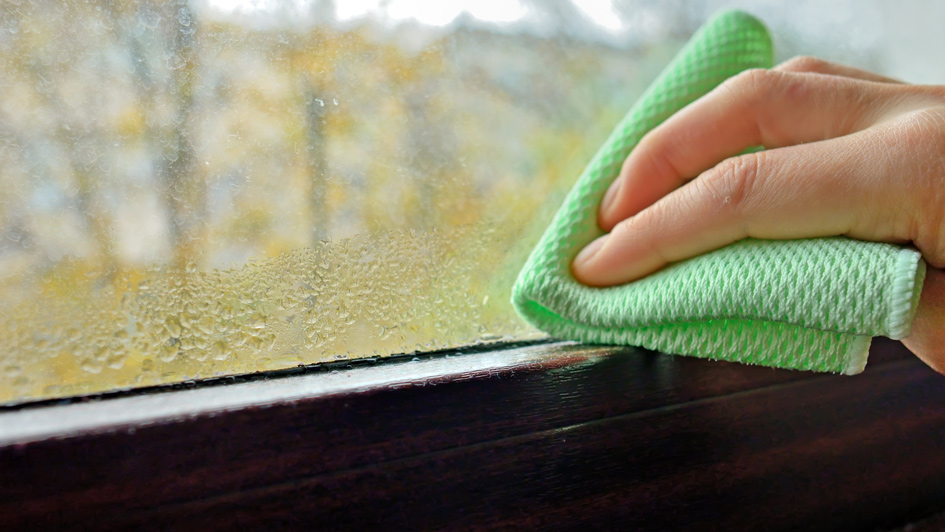
The windows of your home open up to the outdoors, a way to let light in as you enjoy the view of your garden, yard or other surroundings. The last thing you need to see is a sweaty window coated in a coating of condensation.
Not only are windows plastered with condensation unsightly, they also can be a sign of a more substantial air-quality issue within your home. Thankfully, there’s several things you can try to correct the problem.
What Creates Sweating on Windows
Condensation on the interior of windows is produced by the damp warm air throughout your home reaching the colder surface of the windows. It’s particularly prevalent in the winter when it’s much cooler outside than it is in your home.
Inside Moisture vs. In Between Panes
When discussing condensation, it’s crucial to understand the distinction between moisture on the inside of your windows compared to moisture in between the windowpanes. One is an indoor air quality issue and the other is a window issue.
- Moisture on the inside of a window is caused from the warm moist air throughout your home collecting on the glass.
- Any moisture you find between windowpanes is produced when the window seal fails and moisture gets in between the two panes of glass, and by then the window needs to be repaired or replaced.
- Condensation in the windows isn’t a window problem and can instead be solved by changing the humidity across your home. Different things cause humidity in a home, including showers, cooking, taking a bath or even breathing.
Why Indoor Sweating on Windows Can Be an Issue
Although you might think condensation inside your windows is a cosmetic issue, it can be evidence your home has high humidity. If this is in fact the case, water could also be condensing on window frames, cold walls or other surfaces. Even a slim film of water can encourage wood surfaces to mildew or rot over time, fostering the growth of mildew or mold.
How to Decrease Humidity Inside Your Home
Thankfully there are various options for removing moisture from the air in your home.
If you have a humidifier operating inside your home – whether it be a small-scale unit or a whole-house humidifier – lower it further so the humidity inside your home goes down.
If you don’t have a humidifier active and your home’s humidity level is excessive, look into installing a dehumidifier. While humidifiers put moisture in your home so the air doesn’t become too dry, a dehumidifier draws excess moisture out of the air.
Smaller, portable dehumidifiers can remove the water from an entire room. However, portable units require emptying water trays and usually service a small area. A whole-house dehumidifier will eliminate moisture across your entire home.
Whole-house dehumidifier systems are controlled by a humidistat, which allows you to set a humidity level the same like you would pick a temperature with your thermostat. The unit will run automatically when the humidity level overtakes the set level. These systems collaborate with your home’s HVAC system, so you should contact skilled professionals for whole-house dehumidifier installation Belton.
Other Ways to Lower Condensation on Windows
- Exhaust fans. Putting in exhaust fans in humidity hotspots including the bathroom, laundry room or above the stove can help by extracting the warm, moist air from these rooms out of your home before it can increase the humidity level in your home.
- Ceiling fans. Running ceiling fans can also keep air flowing within the home so humid air doesn’t get stuck in one place.
- Opening up window treatments. Opening the blinds or drapes can lower condensation by stopping the warm air from being stuck against the windowpane.
By lowering humidity across your home and moving air throughout your home, you can enjoy clear, moisture-free windows even in the winter.
